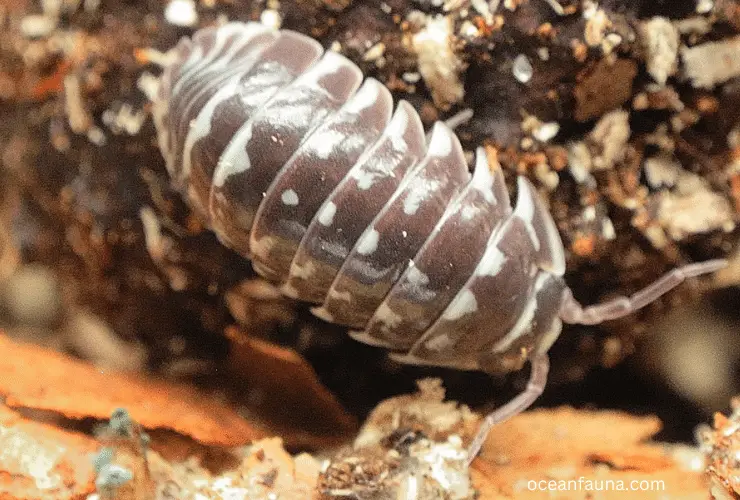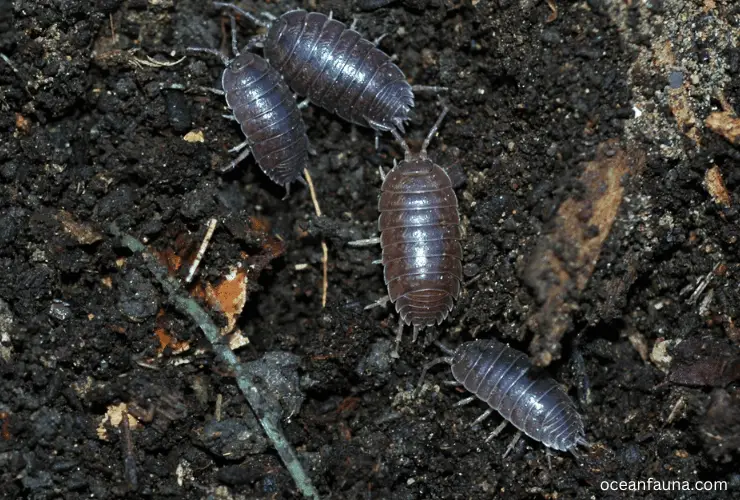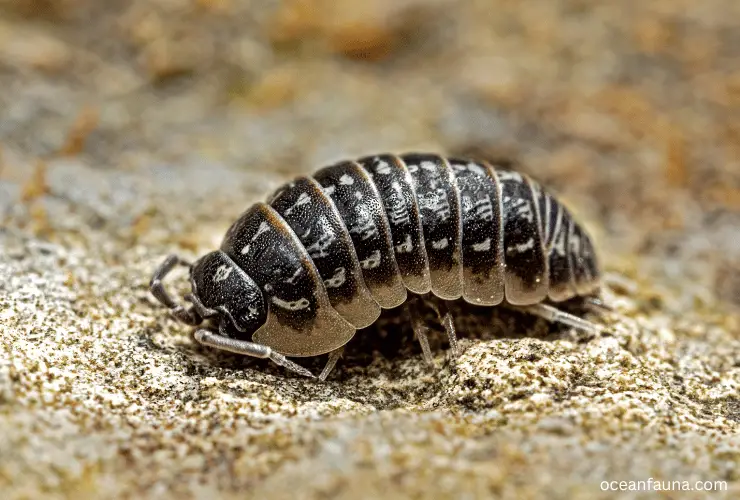Isopods are a type of crustaceans found in large numbers in both fresh and saltwater habitats. They are small, segmented creatures with two pairs of antennae, two pairs of eyes, and two sets of legs. Isopods are commonly known as “pillbugs” or “sowbugs,” and they play an essential role in the environment and human health.
Nowadays, people have become quite enthusiastic about keeping isopods as pets or cultivating them commercially. So, the question arises, what are isopods used for? Do they provide any benefits?
The most apparent benefit of isopods is their role in the environment. Isopods are a significant food source for many aquatic species, including fish, turtles, and even some birds. They also act as scavengers, feeding on dead and decaying organic matter. This helps keep the environment clean by reducing the number of bacteria, fungi, and other pollutants in the water. Isopods also provide essential nutrients to their predators and help to keep the water clean by eating algae and other organic material.
On top of that, there is a wide range of benefits that isopods provide. So, if you’re eager to know about them, you’re at the right place. So, without any further ado, let’s get started…
What are Isopods Used For?
Among the 10,000 species of isopods, most of them are found on land. And several species live on the water. No matter where they live, isopods always keep a substantial impact on the environment they’re living in.
Isopods are found anywhere and everywhere in our surroundings, mainly in the wild, forest, and damp areas. Although they’re tiny little bugs, they help keep a balance in the environment and benefit human lives in several ways you can’t even imagine.

Based on their benefits, some people have taken a step forward to keep them as pets and cultivate them commercially, as they have significant commercial value. On top of that, isopods are easy to keep in captivity as pets.
In this article, we’ll cover what isopods are used for! As isopods positively impact the environment and human lives, we’ll divide the guide into two parts and explain its importance in each segment.
Use of Isopods by Humans
Although isopods are found in the wild, they have been kept as pets in recent years. And the reason being their friendliness, adaptability, and benefits. They are often kept in captivity as pets or alongside thousands of others while cultivating commercially.
Terrariums and Vivariums
Isopods are mainly kept in Terrariums and Vivariums in human households. These are transparent glass containers where isopods can be noticed from outside. Alongside isopods, other tiny trees and greenies are also kept in transparent glass containers so that they get a feeling of the wild.
In these captive environments, isopods live by feeding on decaying organic materials. This helps to keep the containers clean from decaying materials. Also, the terrariums and vivariums look clean and beautiful from the outside.
Isopods help to keep the natural balance and recycle the materials inside the container. Because they’re tiny and move around in the containers, they’re visually appealing too.
Many people keep these containers with greenies and isopods in them as showpieces in their living rooms. This works great to enhance the aesthetic of your living areas and grab the guests’ attention.
Pets
People have different and unique hobbies. But who would’ve thought of keeping these tiny bugs like isopods as pets?
Yes, you heard it right. Isopods are pretty famous for keeping pets. And the reason is simple. Isopods are friendly, and they don’t bite or cause harm to humans. In addition, even though they live in the wild, they’re not aggressive.
That’s why some people have this unique hobby of keeping isopods as pets. The same isopods kept in terrariums can also be kept as pets. But for keeping them in captivity or pets, their living environment needs to be prepared carefully, or their survival chance is very low.

Another reason for keeping isopods as pets is their color combination. As you already know, the living world has almost 10,000 species of isopods. And not all of them look the same.
Some isopods have colorful bodies. So when they’re kept in transparent containers, they look stunningly beautiful. This adds great aesthetic value to your house and brings uniqueness.
Breeding Commercially
As said earlier, Isopods are also being cultivated for commercial purposes. Due to their wide range of benefits, they have grown quite a demand worldwide.
As they mainly live in the wild, they’re only a little available in open spaces. So some people purchase them commercially for their purposes.
Due to this demand, people now cultivate isopods commercially and sell them in the market. The cultivation process of isopods is relatively easy, and you can do it at your home too!
Besides, as isopods are tiny in size and they’re very adaptable, it takes little to no labor and money to breed them.
On top of that, due to their tiny size, you can keep thousands of Isopods in a small space. So, you don’t need to have an ample space or need to hire workforce to breed them. You can start with a little container, prepare it well, and put the isopods there. It’s straightforward!
Pest Control
Isopods also have practical applications in pest control. They are used as an alternative to chemical pesticides. They are effective at controlling insect pests, such as aphids and thrips. This is due to their ability to eat large numbers of pest insects and their high reproductive rate, which allows them to quickly colonize and control infestations.
Furthermore, as they are not harmful to plants, animals, or humans, they make an eco-friendly pest control alternative.
Food Source for Your Pets
One of the most well-known uses of isopods is as a food source for various animals.
Isopods, specifically woodlice, are commonly fed to pet reptiles, amphibians, and arachnids, as well as to captive-bred insects and other invertebrates. This is due to the fact that isopods are high in protein and other essential nutrients and are also easy to maintain and culture in captivity.
So, if you’ve any pets that are reptiles or amphibians, you can use the tiny little isopods as a food source for them.
And as isopods are enriched with protein and found in nature, you can easily manage these food sources for your pets at zero cost!
Research and Educational Purposes
Isopods are also commonly used as laboratory organisms for research purposes. There are thousands of species under isopods. They’re found in both land and in marine environments. Due to their adaptivity and unique lifestyle, they’re often researched to know more details about them.
They have a wide range of genetic, physiological, and behavioral characteristics that make them useful for various scientific studies. For example, researchers studying the effects of pollution on terrestrial ecosystems often use isopods as model organisms to understand the impact of toxins on soil-dwelling organisms.
Additionally, isopods are also studied to help understand the effects of climate change on biodiversity.
In addition, isopods are also used for educational purposes as well. They are easy to maintain and observe in captivity, making them ideal organisms for classroom studies and demonstrations.
For example, isopods can teach students about ecological principles, such as food webs and trophic dynamics, and help them understand the importance of biodiversity and conservation.
Benefits of Isopods on the Environment
Isopods are also an important component of terrestrial ecosystems and play a vital role in maintaining the health and biodiversity of these ecosystems. They contribute to nutrient cycling, pest control, soil health, food web, and bio-indicator of environmental change.
By understanding their ecological importance, we can work to protect and preserve these crucial organisms and the ecosystems they support.
Decaying of Dead Bodies
In agriculture, isopods play a vital role in nutrient cycling. They consume decaying plant matter, microorganisms, and organic matter and shred it into smaller pieces.
The smaller pieces are then further decomposed by microorganisms, making the nutrients more readily available for plants. They also help to aerate the soil by burrowing through it, which can improve soil structure and water retention.
Furthermore, they are used to remove pests in greenhouses as well as help with soil aeration and to break down organic matter.
Biodiversity of the Ecosystem
Isopods, also known as terrestrial crustaceans, play an important role in maintaining the health and biodiversity of terrestrial ecosystems. They are decomposers and detritivores, meaning that they break down dead plant and animal material and help to recycle nutrients back into the ecosystem. This process is known as nutrient cycling and is essential for maintaining the balance of an ecosystem.
Preservation of Soil Health
One of the main benefits of isopods in the environment is their role in soil
health.
Isopods consume decaying plant matter and microorganisms and shred them into smaller pieces. The smaller pieces are further decomposed by
microorganisms, making the nutrients more readily available for plants. This
helps to improve soil structure and fertility and can increase the growth and productivity of plants.
Isopods also help to aerate the soil by burrowing through it, improving water retention and increasing the diversity of microorganisms and other soil organisms.
Pest Control in Cultivable Land
Isopods are also beneficial in the control of pests. They are natural predators of insects and other small invertebrates and can help control pest species’ infestations.
They can be used as an alternative to chemical pesticides and effectively control insect pests, such as aphids and thrips. This is an ecologically friendly way of control as they are not harmful to plants, animals, or humans.

Furthermore, isopods also contribute to biodiversity by providing food for other organisms. They are an important part of the food web. Various animals consume them, including reptiles, amphibians, arachnids, and other invertebrates. This can help maintain the ecosystem’s balance and support populations of other organisms.
Research
In addition, Isopods are also used as bio-indicators for environmental research. Their presence or absence and their abundance or diversity can indicate changes in environmental conditions, such as pollution or climate change. This way, they help researchers understand and evaluate environmental impacts.
FAQ
What is the purpose of an isopod?
Ans: Isopods help to decompose the dead organic substances in the environment, break them down into small particles and help increase soil fertility. On top of helping to maintain the natural balance, isopods are an excellent source of nutrients for many other creatures in the wild.
Why do people keep isopods?
Ans: In recent years, isopods have become quite common as pets. Due to their friendliness, low maintenance, and storage cost, many people keep isopods as pets. Also, isopods have great demand in the market. That’s why people cultivate them for commercial purposes as well. Lastly, isopods are used for research and educational purposes as well.
Conclusion
In conclusion, isopods play an essential role in the environment and human health. They are a vital food source for many land and aquatic species and provide essential nutrients to their predators. Isopods also act as natural pest control, help to improve water quality, and reduce the risk of diseases in humans. Isopods are an essential part of the natural ecosystem, and we should all take the time to appreciate and protect them.
Alongside having many benefits for the environment, isopods are widely used by humans for many purposes. From keeping them as pets to using them for research and teaching purposes, they are one of the most important species in the living world.
So, what are isopods used for? We believe you’ve now got your answer as you’ve read this far. Thank you for reading till the end. If you have anything more to know, do let us know in the comment box!


1 thought on “What are Isopods Used For? [Incredible Usage and Benefits]”